When thinking about my recent visit to Prague with my brother, certain questions come to mind. Such as, what is St. Vitus Dance? Who was St. Vitus?
As for the latter question, he is one of those legendary saints, emerging from the bloody mists of early Christian persecution. “According to the legend… St. Vitus suffered martyrdom at a very early age under the emperor Diocletian,” the trusty 1911 Encyclopædia Britannica notes.
“Son of a Sicilian nobleman who was a worshipper of idols, Vitus was converted to the Christian faith without the knowledge of his father, was denounced by him and scourged, but resisted all attacks on his profession… Among the diseases against which St Vitus is invoked is chorea, also known as St. Vitus’s Dance.”
Chorea refers to abnormal involuntary movement disorders of a few types, but not epilepsy. A more detailed entry about St. Vitus is in the 1913 Catholic Encyclopedia, which says: “St. Vitus is appealed to, above all, against epilepsy, which is called St. Vitus’s Dance, and he is one of the Fourteen Martyrs who give aid in times of trouble.”
The text seems to conflate chorea with epilepsy, but you don’t go to books of that vintage for current medical knowledge. Regardless, St. Vitus has a long history of veneration, including in Bohemia. That would account for the naming of St. Vitus Cathedral, which we visited in Prague, coming in early afternoon by way of a streetcar and then a less-visited entrance to Prague Castle.


An impressive hulk of a church on a high hill, St. Vitus Cathedral is a major presence in Prague Castle.

When we were here in 1994, the church was dedicated to Vitus alone, but these days it is the Metropolitan Cathedral of Saints Vitus, Wenceslaus and Adalbert (metropolitní katedrála svatého Víta, Václava a Vojtěcha). The renaming happened a few years later. The thinking might have been that it was all well and good to honor a popular Sicilian saint, but it would also be good to add some hometown martyrs.

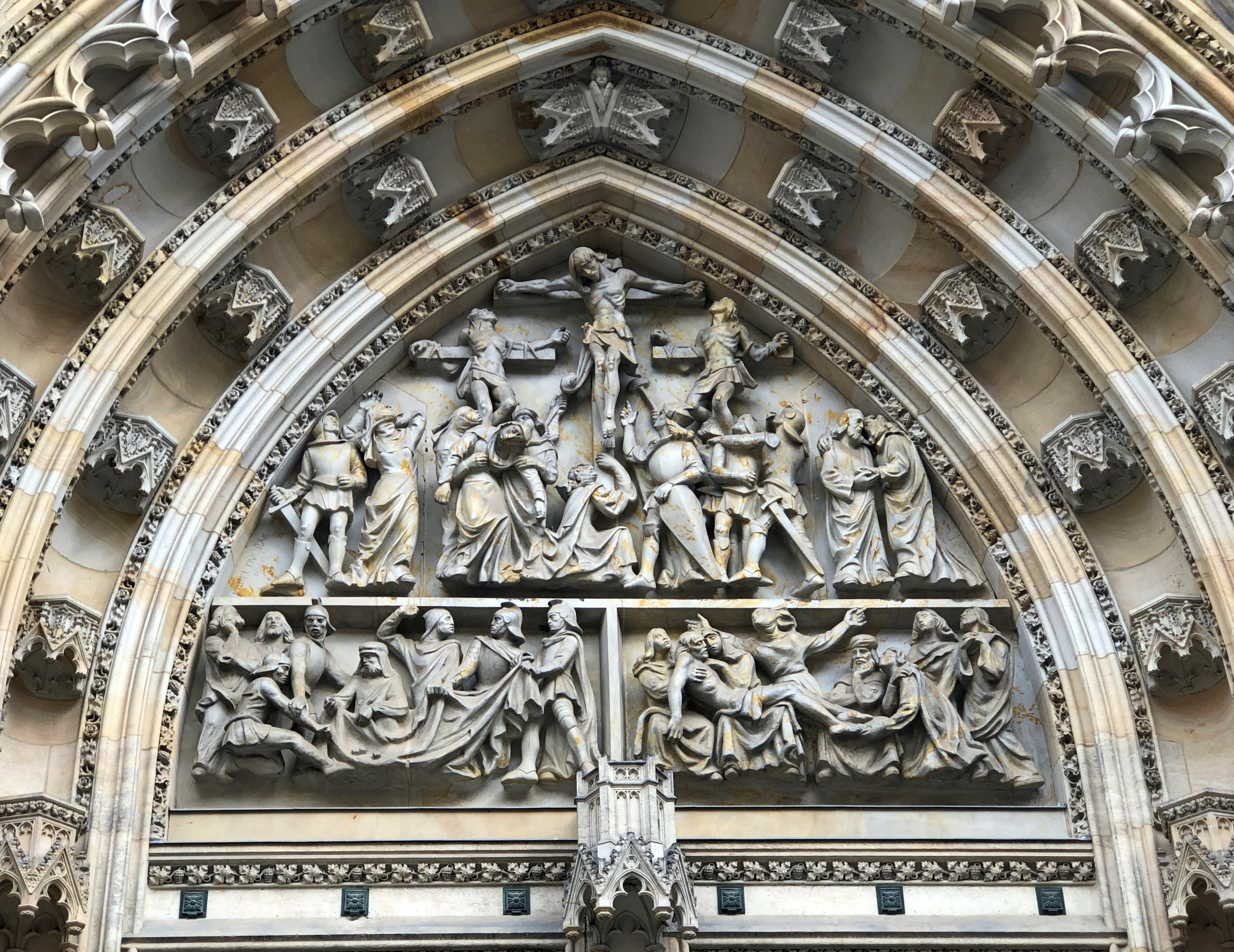
Inside the church was, to rephrase for our time (in its original form, a favorite expression of my mother’s), cold as the mammaries of a Wicca practitioner. Colder in fact than outside on that day in mid-March, but I’ll take that as a blow for authenticity. For most of the cathedral’s long history, including centuries when it wasn’t finished, its HVAC was the Lord.
The chill might have discouraged sitting around on pews, but not from taking a circuit up a side aisle, around behind the altar, and back down the other side aisle.
What is it about the Gothic ceilings? A vast volume of space, or at least the perception of a vast volume of space, but it’s more than that.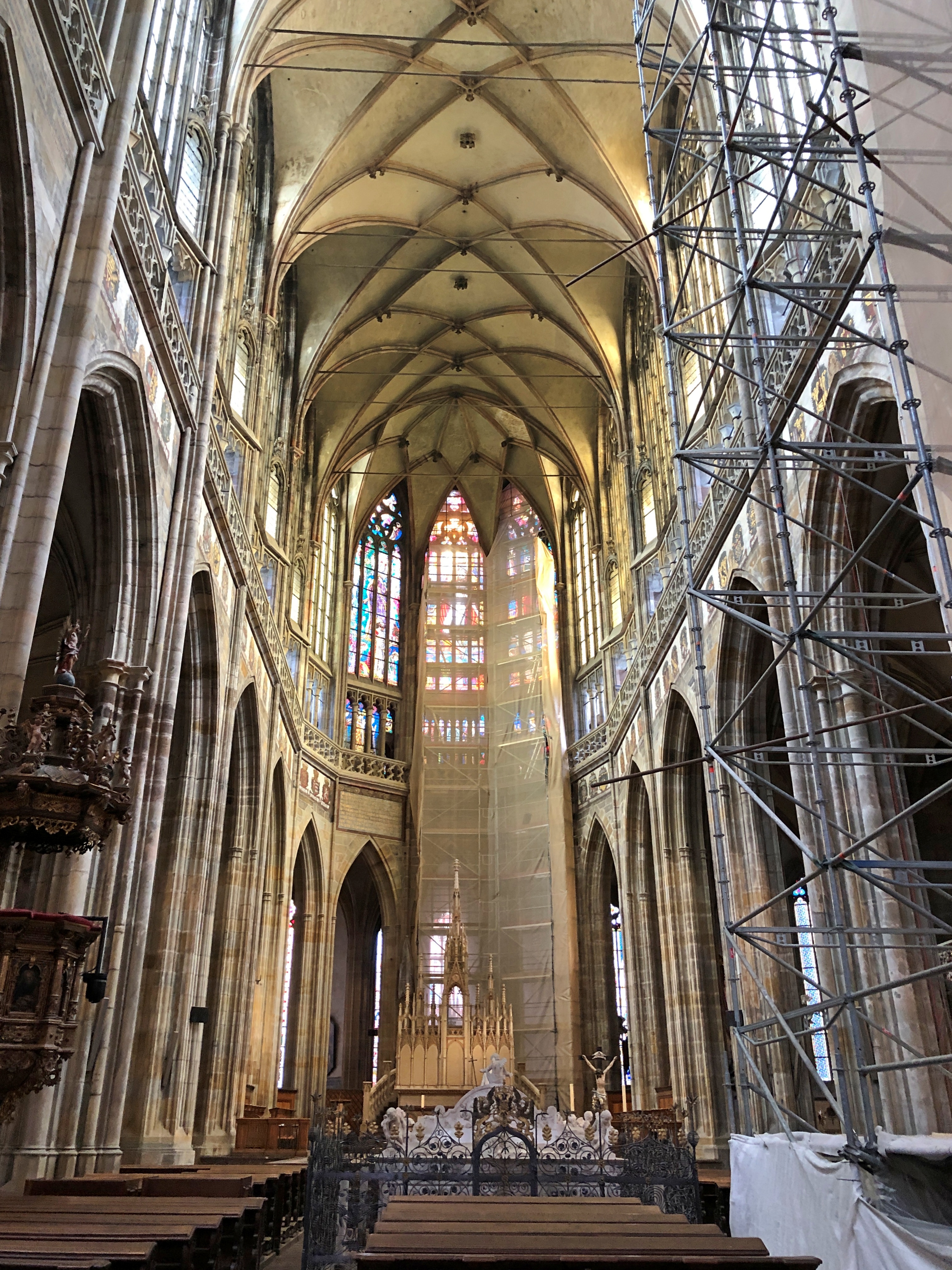
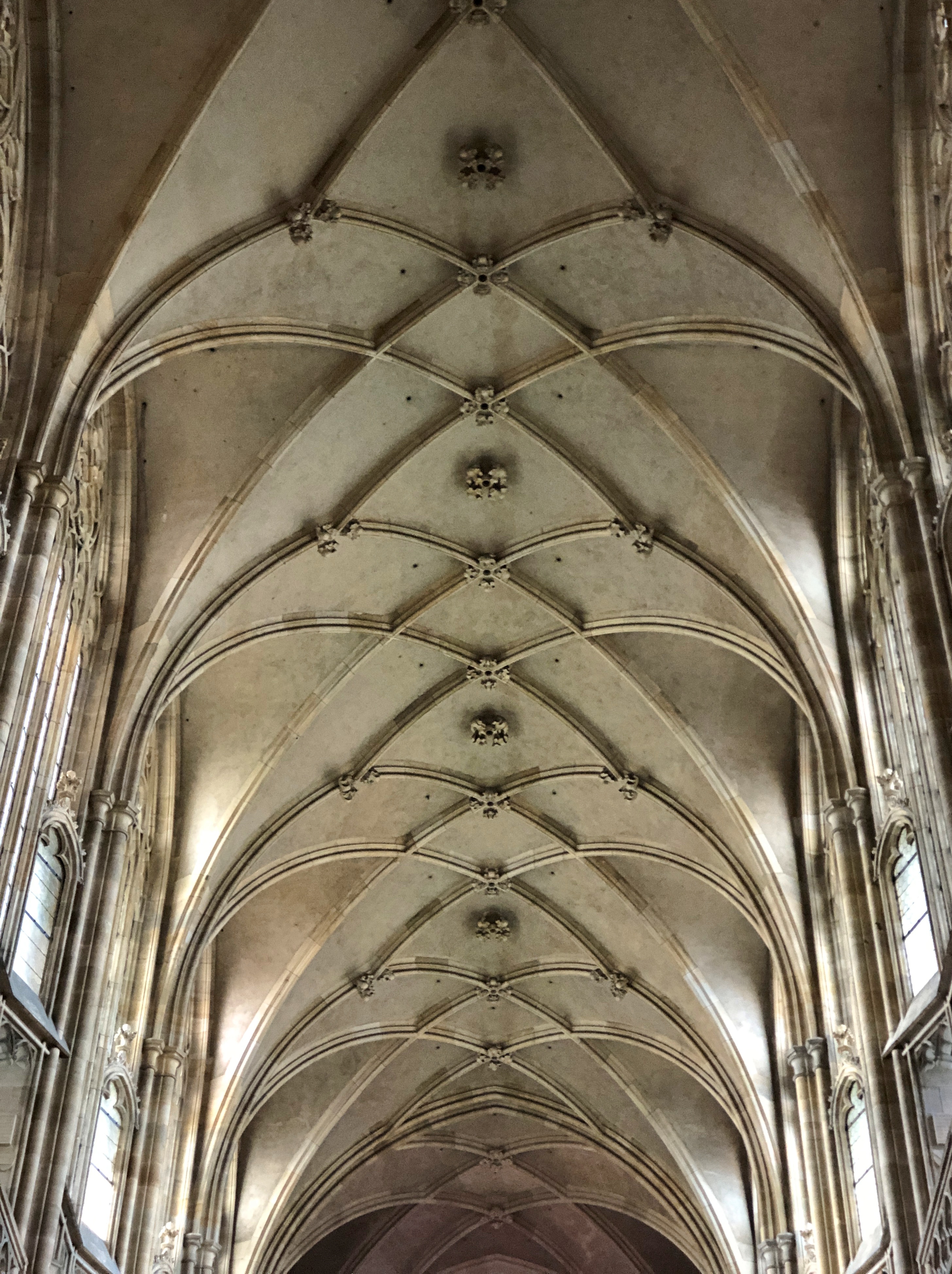

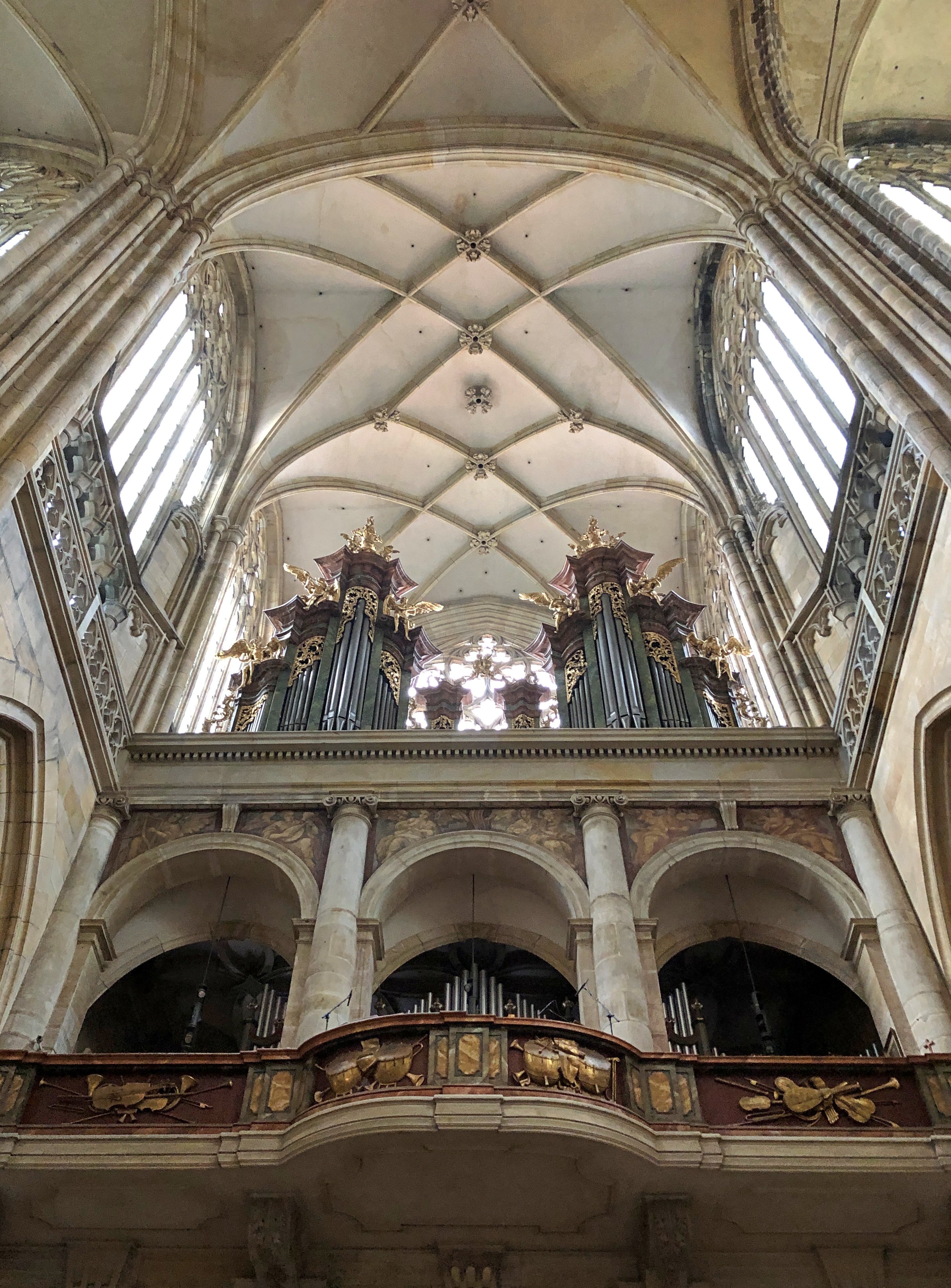
A small sample of the rich detail.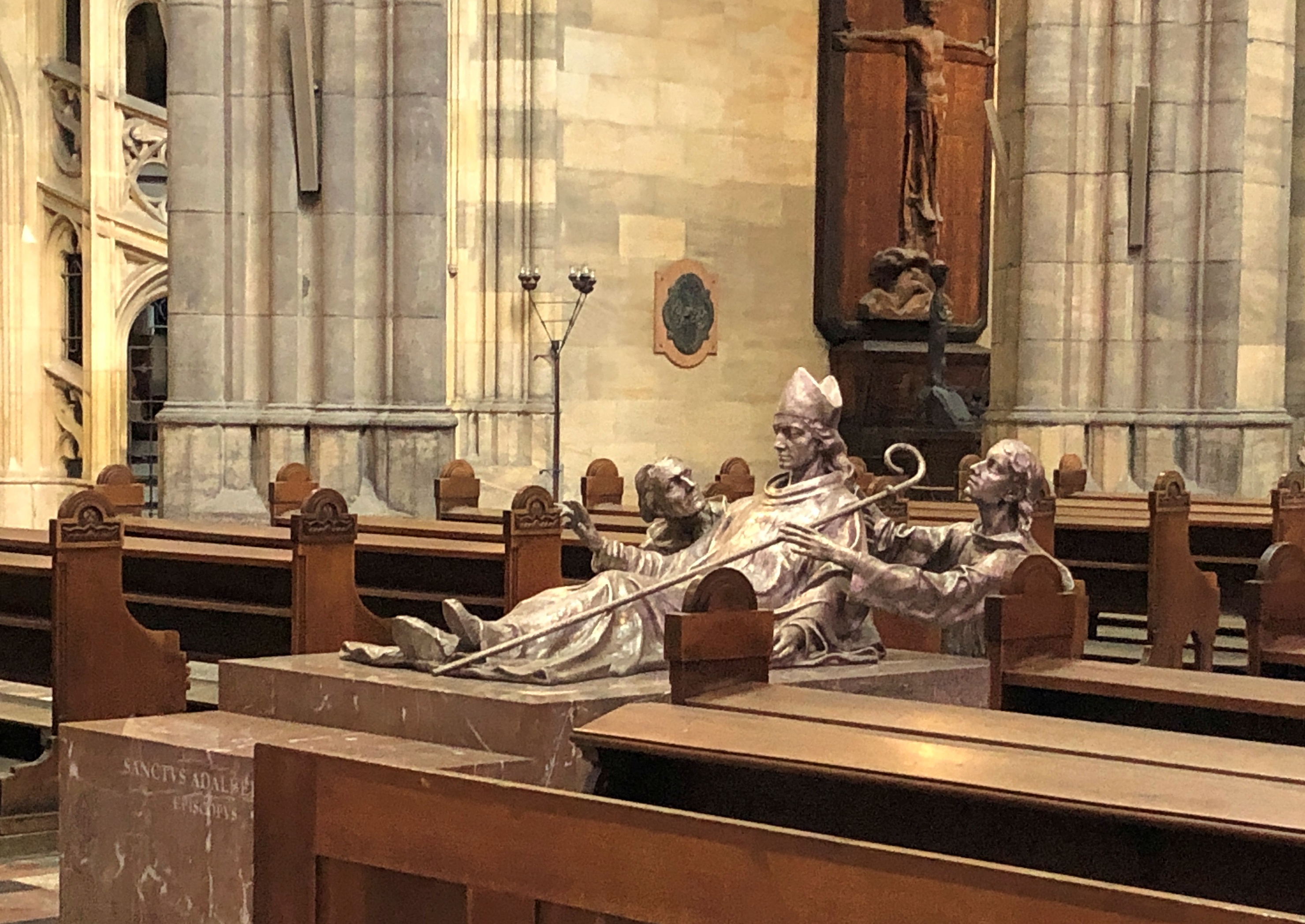
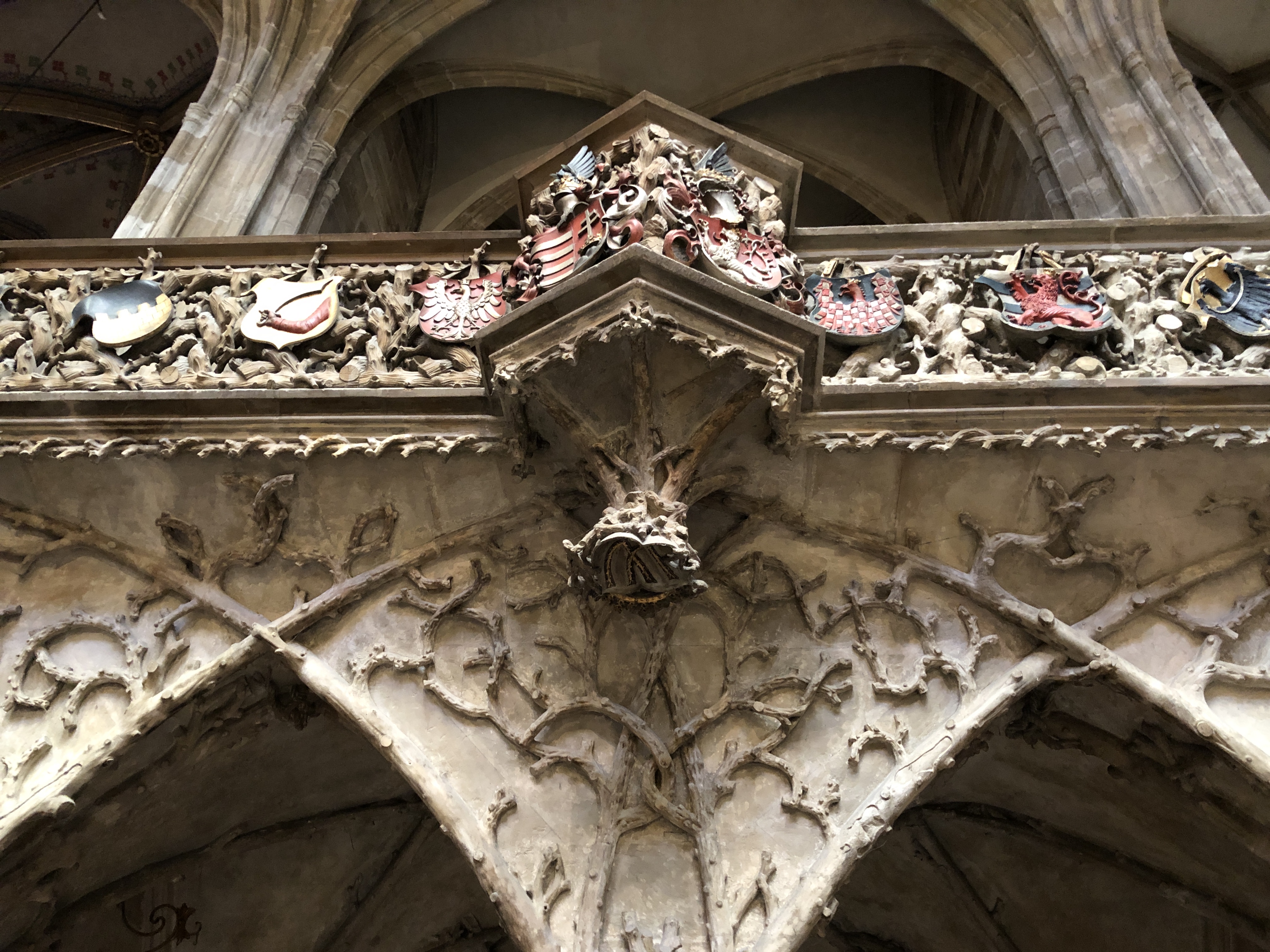
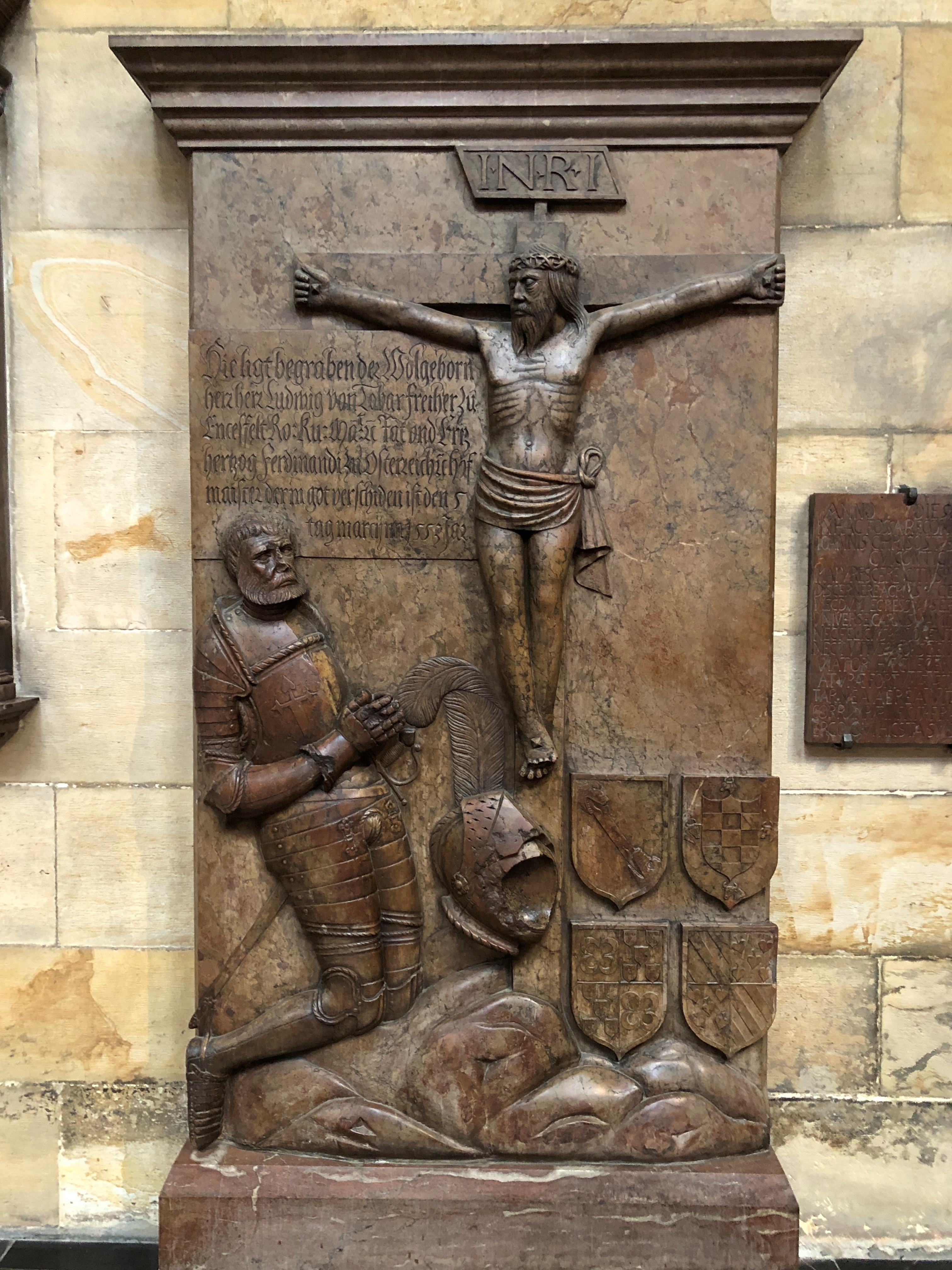
Call this one mother and child and prelate.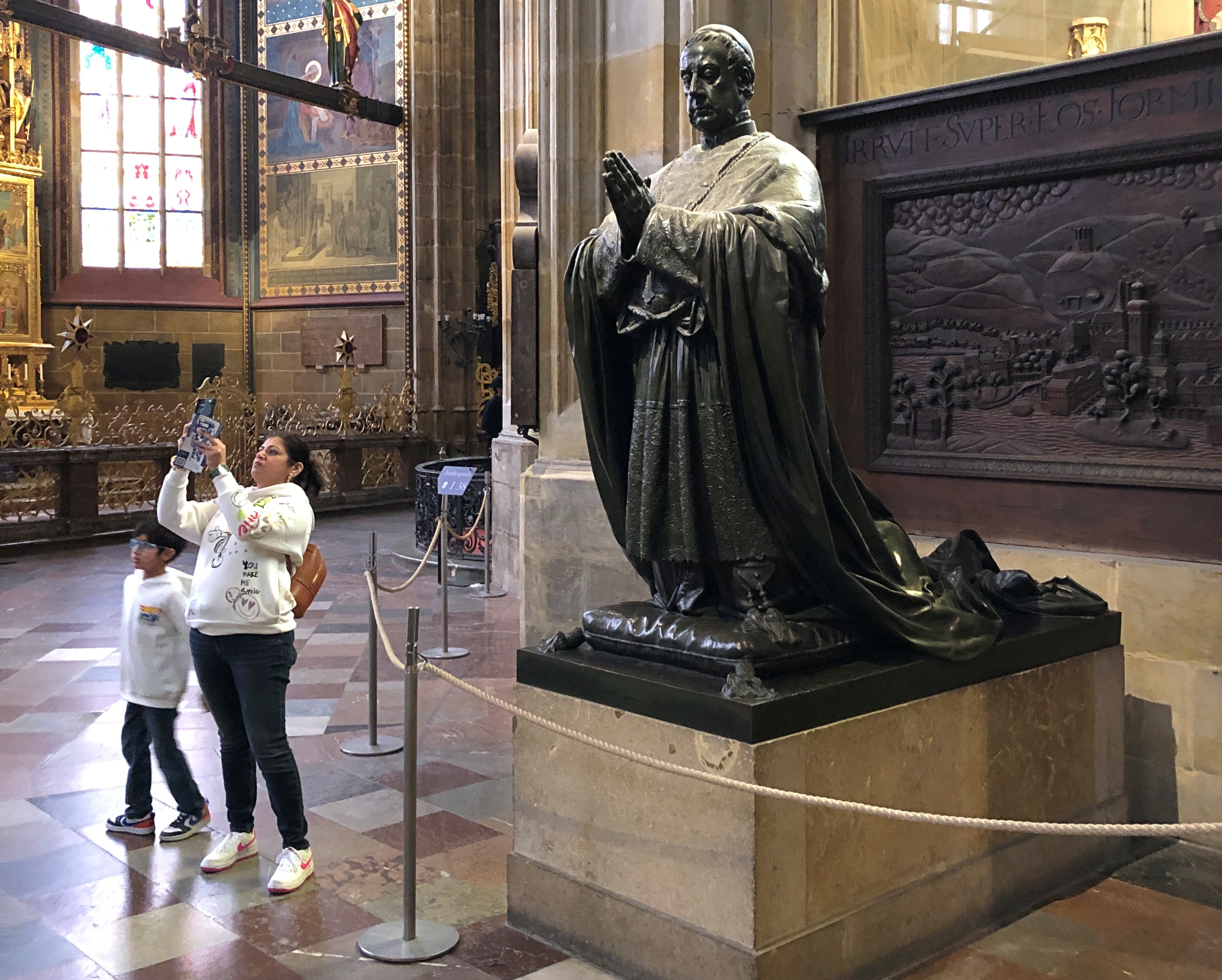
Last but hardly least, a gargoyle from outside now on display in the church.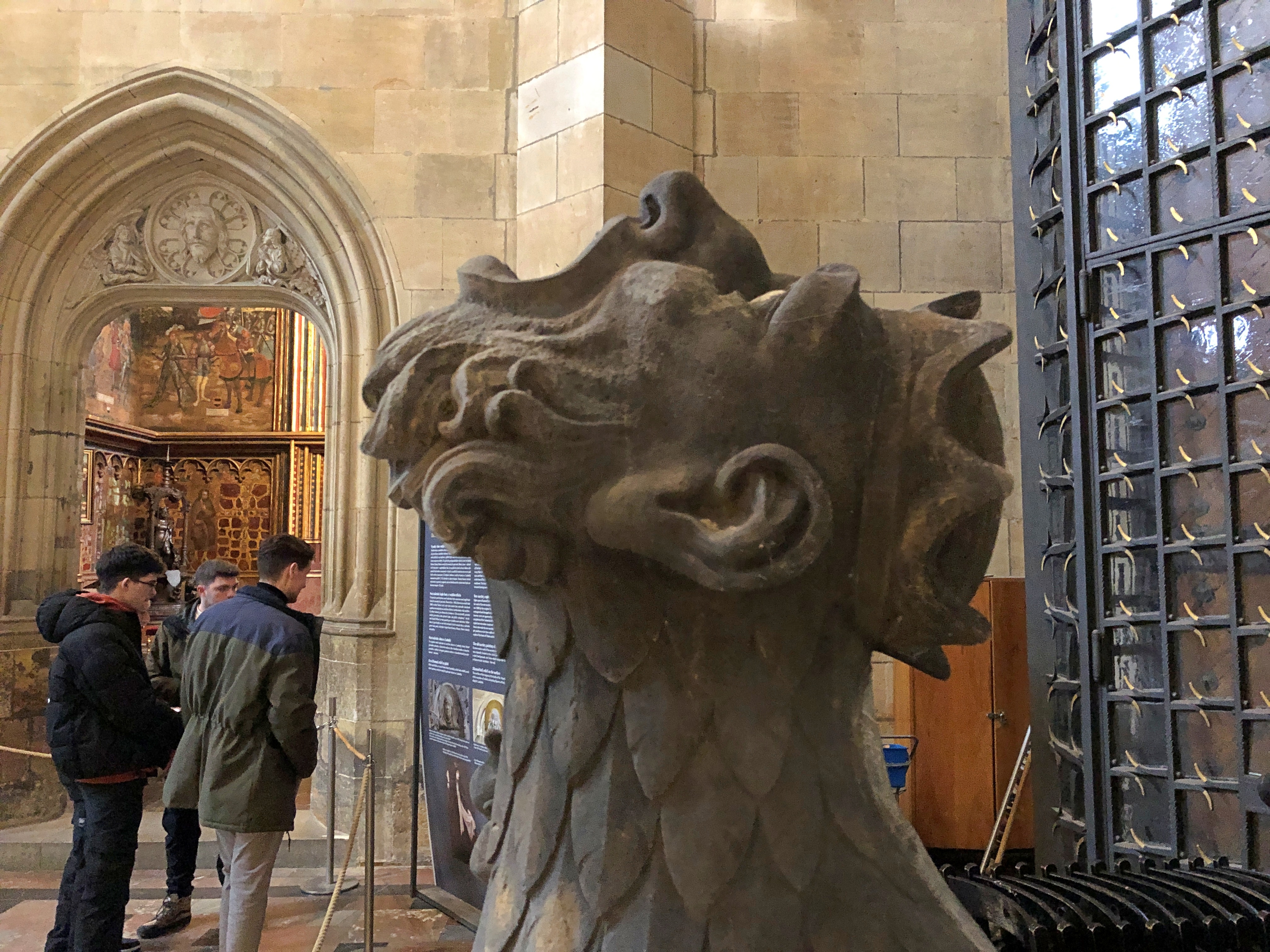
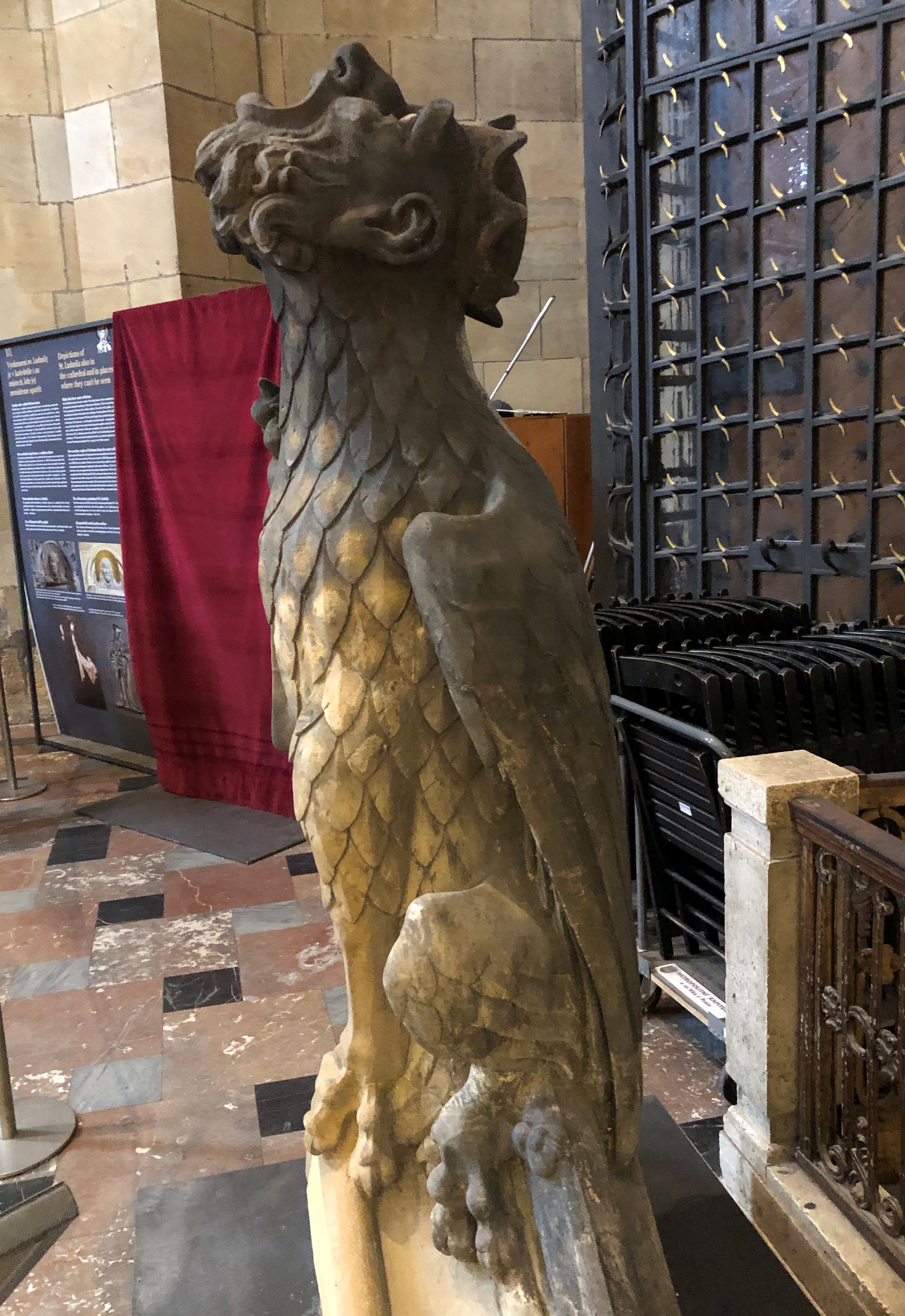
Retired from the madcap life up there on the roof with the other gargoyles. Or maybe their activities up there aren’t the stuff of comedy. The Gargoyles of St. Vitus sounds like a Victorian horror story. Better yet, The Dancing Gargoyles of St. Vitus. Could be an episode of Night Gallery or, with updated tech, Black Mirror.